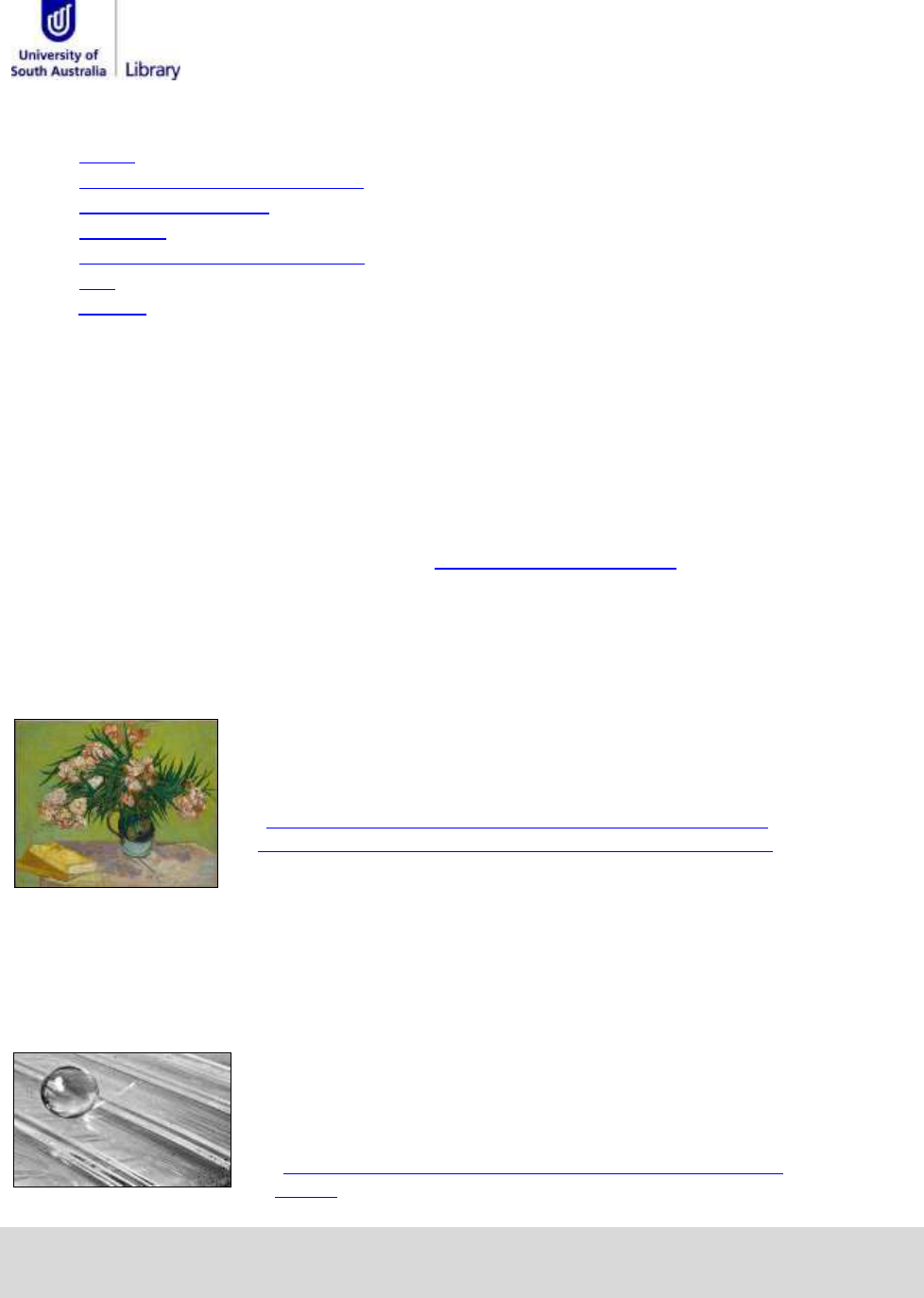
Find and attribute images for your work
CRISCO No: 00121B
Find and attribute images for your work
January 2022
Images can be a great way to visually enhance assignments and presentations, however creators have the right
to control how their work is used by others. This means you must consider copyright every time you use
someone else’s work.
To reproduce images, you should:
• Acknowledge the title and creator/author (Copyright Moral Rights law),
• Use your discipline’s scholarly referencing style (e.g., UniSA Harvard), and
• Consider industry norms (e.g., acknowledge the artist, photographer, museum where the
image is located).
Using images for university assessment
You can use images for your assignments if you attribute your source.
Using images for work outside of university
When using images outside of University you will need to consider who owns the copyright in the image
or if there are any license conditions attached to it. If you use the image without the authors permission,
you may be breaching copyright. You must always check the licensing conditions of the image.
Please watch this short video Study Help: Understanding Copyright for more information on copyright at
university.
Finding public domain or creative commons images
There are millions of images available on the internet but not all are available for reuse. Some have few or no
restrictions (Creative Commons or Public Domain images), some require written permission to re-use and others
are only available on payment of a fee (e.g., Getty Images).
The University encourages you to use images that are open or licensed under creative commons. By using open
or creative commons material you can be confident that the images you are using comply with copyright law
both in your studies and afterwards when you are working in the industry.
Watch this video for some hints on sites to search for images in the public domain:
https://youtu.be/U300vHq7qHs
Illustrative images:
• Creative Commons search – images licensed under creative commons
• Flickr - limit by All creative commons
• Flickr: The Commons – public domain images
• Google images – select More tools > Usage rights > Labelled for reuse
• OpenClipArt – public domain images
• Pexels - public domain images
• Pixabay – public domain images
• Unsplash – public domain images
Artworks and objects:
• Fine Arts Museums of San Francisco - can use images for non-commercial, educational purposes.

Find and attribute images for your work
CRISCO No: 00121B
Find and attribute images for your work
January 2022
• MoMA – can use images for non-commercial, educational purposes.
• National Gallery of Art (US): Images – open access images.
• New York Public Library – open access images.
• Rijksstudio – open access images.
• Smithsonian Freer Sacker collection – can use images for non-commercial, educational purposes
• Tate (UK) – can refine your search by creative commons.
• The Met – can refine your search by open access.
Image attribution: How to acknowledge and reference images
When using an image, you must as a minimum:
• Provide the author of the work and the title if there is one.
• If you have copied the image under a license, abide by the license terms.
For example: creative commons licenses require you to state the license used and provide a link to it.
Watch this video to learn more about their licenses: https://youtu.be/uhgihySJyHk.
As well as meeting these minimum copyright requirements you should reference the image in the
appropriate reference style to meet academic integrity requirements.
See these examples using UniSA Harvard style:
Example of a public domain image:
Van Gogh, V 1888, Oleanders, The Metropolitan Museum of Art, viewed 15
November 2018,
<https://www.metmuseum.org/art/collection/search/436530?searchField=
All&sortBy=relevance&ft=van+gogh&offset=0&rpp=20>
To reference a creative commons license image, you would reference it the same way and include a link
to the license underneath.
Example of a creative commons image
Johnson, S 2010, Ebook images, Flickr, 20 October, viewed 15 November
2018,
<https://www.flickr.com/photos/artbystevejohnson/5513245080/in/photo
stream/>.
Tip: Your reference does not have to be next to the image. You can provide this information in
another place (e.g., at the end of a PowerPoint presentation, or in a separate file), if it is clear.
